By Stephanie Pearson | Published in Outside May 30, 2023
It took 20 years of planning to open the new 190-mile Aquarius Trail bikepacking hut system in southern Utah’s spectacular wilderness, sandwiched between Bryce and Zion national parks. Stephanie Pearson saddles up for a wild ride.
Death or serious injury by my pink crocs would have been an embarrassing way to go. I’m in southern Utah, on my mountain bike, with my partner, Brian Hayden, and two old friends, Jen Judge and Aaron Gulley. We’re navigating the tough and disorienting Cassidy Trail, which is named after Butch Cassidy. According to local legend, the outlaw used it to evade an angry posse after he got in a fight over a woman at a dance in his nearby hometown of Panguitch.
It’s the end of September, and we’re riding at elevations higher than 10,000 feet, so I’m loaded down with a few necessities: bike tools, clothing layers, two EpiPens (I’m allergic to bees), a full-size bottle of sunscreen (cancer-prone Scandinavian genes), Crocs to wear in camp after riding. I have enough snacks to survive for a week if we get lost, which is highly unlikely, considering that we’re also carrying cell phones, a Spot tracker, and sophisticated GPS units to lead us to our destination each night, one of five backcountry huts made from shipping containers, most of them located in the two-million-acre Dixie National Forest.
Each hut is stocked with fresh water, energy-food staples like peanut butter and M&Ms, a fridge full of front-country food like filleted salmon, the occasional guitar, and 1.5 beers per person—just enough to celebrate the day’s accomplishments, but not so much that we get sloshed.
The Crocs are clipped to the rear pack on my dual-suspension cross-country mountain bike. Despite a 25-pound gear load, the carbon bike has operated heroically for the first 80 miles of the 190-mile, six-day trip. The singletrack on the Cassidy Trail is a good test. It isn’t part of our official route on the Aquarius Trail, but the guys were intrigued by comments on Trailforks, the app we’re using, such as: “Probably one of the most scenic trails you’ve never heard of, likely due to its difficulty in the steeper uphill sections.”
The more punishing it is, the better for Aaron. A writer and former editor at Outside, he’s survived some of the toughest bike races in the West, including the 800-mile Arizona Trail, the 500-mile Colorado Trail Race, and multiple Leadville 100’s. Jen, who is married to Aaron, has a professional résumé that includes photographer (she took the shots for this story), hunting guide, and founder of Wild Encore, a company that teaches clients how to sustainably harvest and process animals. She has also raced road bikes, bike-toured throughout South Africa, and won all sorts of 12-hour mountain-bike races.
Brian is the founder of the 350-kid-strong Duluth Devo Mountain Bike Program in Minnesota. A former Category 2 road cyclist, he’s raced the Almanzo 100 in southern Minnesota, which kicked off the gravel craze, and is a five-time finisher of the Unbound 200, held in Emporia, Kansas, keeping his suffering to the Midwest. Me, I’ve been riding a mountain bike since the mid-1980s and have dabbled in trail and gravel races, but I get the most joy riding free from the stress of competition.
Plan your Aquarius Hut trip adventure with Trailforks to get all the stats, conditions reports, and beta you need for an epic ride and to make sure you don’t make any wrong turns along the way.
The deeper we go on the singletrack, the more undulating and otherworldly the trail becomes, pushing up and over white limestone hoodoos sandwiched between Bryce and Zion National Parks. We plateau at 7,880-foot Brayton Point and stop long enough to admire the vast red canyon below us. In the far distance are jagged peaks lit up with bands of golden aspens. Above are billowing thunderheads. If I were Butch Cassidy, I’d have hung out here, too.
We push ahead. The steep downhills followed by punchy climbs are making me ornery. On one transition, the Crocs get lodged in my rear wheel and it seizes up. I lurch over the bars in a slow-motion, f-bomb-riddled crash. Thankfully, the only carnage is the mangled shoes.
“Now this is bikepacking!” Jen gleefully cries as I walk to the top of the climb.
At the end of the singletrack, eight bolts of lightning sizzle down from the bruised heavens. We pedal up a Forest Service road, top out on the wide-open plateau, and fly for miles down another Forest Service road, outpacing the storm. The last push is a five-mile ascent to the Pine Lake Hut. Just when we can almost taste the beer, Brian drops back and disappears. I wait for what feels like an hour as Jen and Aaron keep riding.
“All OK?” I ask, as he rolls into view.
“Uh, I found out why I might be getting a stomachache,” he says, showing me the bite valve on his pack’s bladder, which has green and black fuzz growing inside it. “I guess I forgot to clean
this part.”
One last wrong turn sets us back about a mile. Brian and I finally roll into the hut at 3:30 P.M. It sits at 8,110 feet elevation, at the base of a monolith banded by red and white sandstone. Just as we enter the shelter, a hailstorm rips through, dropping pea-size pellets. They ping off the steel container that, with its propane heater, has been warmed like an oven.
“That was some riding!” Aaron says, stoked. “That’s more like what you get in an endurance race.”
“I’ve ridden 45 miles, climbed almost 4,537 feet, and shifted 372 times,” adds Brian, checking his Garmin.
When the hail stops, I return outside to find a barrel of sanitized hut shoes for guests. I toss the broken Crocs, which are marked with tire burns, into the garbage. Too lazy to unclip the packs from my bike, I unzip the rear bag and the contents spill out onto the dirt. I crack beer number one and ruminate over the First Rule of Bikepacking, which also seems an apt metaphor for life—carry less baggage.
In his 1968 classic Desert Solitaire, Edward Abbey, who worked for two summers as a seasonal ranger at what was then Utah’s Arches National Monument, opines about how to better manage access to public lands. Long before reservations, timed entries, and other crowd-control tools came into play, the curmudgeonly visionary was a fan of using bikes instead of cars to explore these stunning places. “Let our people travel light and free on their bicycles—nothing on the back but a shirt, nothing tied to the bike but a slicker, in case of rain,” he wrote in one chapter. “Their bedrolls will be trucked in for them free of charge to the campground of their choice.”
A half-century later, another sort of visionary, an outdoor entrepreneur named Jared Fisher, unknowingly heeded Abbey’s call. In 2017, he built the first of what would eventually be five huts along a 190-mile route of Forest Service roads and singletrack he named the Aquarius Trail. It starts at the 11,307-foot summit of Brian Head Resort and ends in 5,820-foot Escalante, a historic Mormon outpost surrounded by a bounty of beautiful public land, including Grand Staircase–Escalante National Monument and, farther afield, Bryce Canyon and Capitol Reef National Parks.
Backcountry bikepacking—mountain biking’s version of backpacking, only all your stuff is in frame, seat, and handlebar packs attached to your bike—has been growing in popularity as more routes have been mapped and bike technology has improved. The craze took off in the 1990s, when the Adventure Cycling Association mapped the Great Divide Mountain Bike Route, a 2,745-mile, mostly off-road trail crisscrossing the Continental Divide from Banff, Alberta, to Antelope Wells, New Mexico. Soon to follow in the early 2000s was the Tour Divide, a race along the trail’s entirety.
Simultaneously, bikes and equipment have gotten better and bikepacking routes and races have sprung up all over the country, such as the 215-mile hut trip from Telluride, Colorado, to Moab, Utah, through the San Juan Mountains, and northern Minnesota’s The Wolf, a three-day, 300-mile stage race through the heart of the north woods. The latter’s most important rule: participants must sleep outside, using only what they carry on their bike.
On the Aquarius Trail, I’ll be sleeping in a bed. That’s one of the four beauties of Fisher’s system: First, cyclists have guaranteed shelter at the end of the day. Second, the shipping-container huts, which are run entirely on solar energy and have no foundation, are completely removable if Forest Service officials decide they no longer want them in place. Third, there are at least two routes to each hut, which means that e-bikers and gravel cyclists can ride gravel roads, while mountain bikers can choose gnarlier terrain—like the initial 12-mile, 2,885-foot Bunker Creek descent from Brian Head, a helluva way to start a 190-mile ride.
Finally, the entire system traverses spectacular public land, mostly within the Dixie National Forest, skirting Zion and Bryce, and crossing the 900-square-mile Aquarius Plateau, allegedly named by geologist and explorer John Wesley Powell in the late 1800s because he found abundant water on it, a rarity in the West. Topping out at 11,328 feet, it’s also the highest forested plateau in North America.
Fisher grew up mostly in New Mexico and Connecticut riding BMX bikes and has cycled across the U.S. four times. In 1992, he and his wife, Heather, cofounded Las Vegas–based Escape Adventures, a cycling-tour company, when they were students at UNLV. Since then they’ve built a southwestern cycling empire, with more than 10,000 guests riding their tours each year, and also have three brick-and-mortar bike shops. One of them, Las Vegas Cyclery, is housed in a LEED-certified, net-zero building powered by a vertical wind turbine and 200-plus solar panels.
An environmentally minded Republican, Fisher, 53, unsuccessfully ran for governor of Nevada in 2018. He’s also a certified minister, offering friends an alternative to the Elvis-themed Vegas wedding. He’s planning two more bikepacking hut systems in other parts of the country.
“In the early days, I knew the Aquarius Plateau was iconic,” Fisher told me when I spoke with him by phone before our trip. “But it was so far out there, with no infrastructure, that all we could do was go camping in the backcountry.”
For 20 years, Fisher noodled at his hut plan. It is nearly impossible to get permits for permanent structures on public lands, but he finally came up with a solution to the dilemma: those shipping containers. At 8,000-plus pounds, they may be heavy, but they’re comparatively portable and very sturdy. He bought a patch of private land near the town of Hatch, Utah, where he built out the first container hut to get the Forest Service interested.
“I kind of put out the candy in front of the government,” Fisher laughs. “I dropped this one hut in 2017 into the middle of nowhere and said to the Forest Service, ‘Look, guys, I already built one.’ ”
The plan worked. An interdisciplinary Forest Service team evaluated Fisher’s proposal, conducting an analysis to determine if the hut system was compliant with the National Environmental Policy Act and the Dixie National Forest Land and Resource Management Plan. Fisher covered the associated costs, like environmental assessments, government employee hours, and wildlife studies.
To simplify the process of making four more huts, he found a guy in Phoenix who was selling 40-foot shipping containers and willing to cut them up and install windows and doors. When COVID hit, Fisher’s biking guides were out of a job, so he hired them to finish the containers and haul them on precarious, mountainous Forest Service roads to their allotted spots.
Each hut is, in reality, one 40-foot container bisected into two bunk rooms, both of which sleep up to six people. They’re connected by decking to a 20-foot-long half-container with a full kitchen and solar shower room. Outside is a propane-fueled fire pit and two picnic tables. A hundred or so yards away is a ten-foot-long quarter-container: the outhouse.
At full capacity, for most of the summer, there are 72 cyclists using the system on any given day, devouring 3,000 pounds of food and 250 gallons of water per week. “It’s a crazy amount of food and logistics,” says Merrick Golz, who manages the huts.
So far, between the 2021 and 2022 seasons, roughly 1,500 cyclists have used the huts, which are already operating in the black. “Overall, self-guided bikepacking has been the most profitable part of Escape Adventures’ business strategy in the past 30 years,” Fisher says.
The Forest Service receives a 3 percent fee on gross sales, and Fisher and his employees maintain the forest and the area surrounding each hut. The feds seem pleased with the arrangement.
I have to admit: I’m pretty happy with it, too.
On day one, Brian and I climb 1,700 feet from our hotel at Brian Head Resort to 11,307-foot Brian Head Peak to meet Jen and Aaron. Big drops of rain start to fall as we ride a few hundred yards of straight-up singletrack littered with sharp, pointy rocks. If this is how the entire 190-mile route looks, I’m toast, I think, second-guessing my readiness for the trip.
This is my first big adventure since COVID. When the pandemic hit in March 2020, I felt relieved that I could finally unpack my bags and stay home for a while. As a writer in the adventure-travel realm, I had chased quixotic quests all over the world for two decades. A partial list includes exploring the Brazilian Pantanal with a rancher trying to save the diminishing wetlands as fires burned around us; riding my bike across the Australian outback; and trekking to Mount Everest Base Camp to document a summit attempt.
On March 13, 2020, I was slated to leave for Antarctica, on a ship headed toward South Georgia Island to retrace Ernest Shackleton’s famous crossing. I canceled at the last minute, thinking COVID could get ugly. It did. The ship sailed anyway, the virus reared its head, and one person died.
As the pandemic ticked away the months, I found that my passion for the risky, far-flung travel that had been my lifeblood was dissipating. At the same time, I still yearned for that powerful rush of freedom and the new friendships that adventure travel gave me. In 2020, when I heard from a friend about a solar-powered hut system coming in Utah, I fantasized about riding it. After two long pandemic years, the Aquarius Trail seemed to offer the right risk-to-reward ratio: should I fly over my handlebars and break a few bones, I would at least be on American soil.
After the initial climb, day one involves a 36-mile downhill joyride on flowy singletrack that meanders through an eerie burn sparked by a brush-pile fire in 2017, followed by a brisk ride on a Forest Service road. When we arrive at the first hut, built in a wide valley surrounded by red cliffs just outside Hatch, a town of 130 residents that’s part of the National Mormon Pioneer Heritage Area, we meet four fit men, your average Baby Boomer–looking Americans, that is until one of them says in a distinct French accent: “I hear that Americans are great chefs.”
The speaker’s name is Michel Bekkers, and he’s here with his childhood best friend, Kris Gommeren, and two of Gommeren’s friends, Antoine de Somer and Paul Bekx. They’re from Belgium, but Antoine is the only one who still lives there. Of the rest, one lives in Spain, another splits his time between Alaska and Michigan, and one has houses in Paris, London, and Monaco. Kris read about the huts in the Financial Times and immediately booked them, almost a year ago.
“We’ve been planning a trip like this since before COVID,” Michel says. “And we finally made it!”
We share cooking duties that night. Brian grills salmon, while Antoine and Michel cook asparagus and I rehydrate mashed potatoes as we watch the sun flame out to the west. In the morning, we ride at separate paces. But each night our groups reconvene, taking turns cooking dinner, listening to Kris play guitar, and swapping stories of the day’s ride and our lives beyond the Aquarius Trail.
Eventually, we learn that these guys are all finance executives. But they get outside, too. Antoine has completed the 155-mile Marathon des Sables footrace across the Sahara Desert in southern Morocco; Michel has a cabin on a lake in Alaska; Kris loves to cycle with friends; and Paul loves to ride but had never been on a mountain bike. He failed to read the fine print about the difficulty level of the trip’s route until it was too late and he was flying across the Atlantic.
“In Monaco,” Paul jokes, “every time I get a croissant at the bakery, it’s 500 feet down and 500 feet back up to my house.” To help with the climb, he bought an electric scooter. “Forget about all those Ferraris. The scooter is the way to go in Monaco.”
The next bucket-list trip for the Belgians, who have found that 1.5 beers each isn’t cutting it, is a whisky-drinking cycling trip through Scotland.
On day three, we rise before dawn, pedaling in the dark to the sound of cows mooing. We’re in a rush to catch the sunrise on a 15-mile ribbon of singletrack, the Thunder Mountain Trail, that Aaron has been wanting to ride for a decade. It winds up and down a ridgeline through otherworldly hoodoos, with views stretching to the back side of Bryce Canyon National Park.
Seven miles into the climb on the multi-use trail, we stop to warm up in the sun and take a few photos. We have the morning silence all to ourselves until a very fast runner appears. He’s soon followed by a trickle of others, one of whom is wearing no shirt and a cowboy hat and is trailed by his own personal videographer. A few seconds later still more runners pass. One of them is barefoot.
“What’s going on?” I ask the next guy who whizzes past.
“It’s the Grand Circle Trail Fest, a three-stage race that goes from Zion to Horseshoe Bend,” he tells me, not even out of breath.
“How many are you?”
“There’s 700 of us.”
“We gotta go! This is stressing me out,” Jen says, jamming her camera gear back into her pack before another group of runners pass us. For the next seven miles we trail the few runners still ahead of us, trying to stay out of their way while simultaneously staying ahead of the roughly 670 others behind us as we gingerly descend switchbacks of steep, loose scree. By the time we reach the point where our ride diverts off their course, we’re as vexed as we would have been driving through rush-hour traffic in L.A.
“Who would’ve thought there’d be a race at dawn on a random Thursday morning in late September?” I ask, biting into my peanut butter sandwich.
“It was a fun ride anyway,” says Aaron. “But it could have been a lot funner.”
That evening, Michel is ecstatic about the official Aquarius Trail route they took. “That was just epic, just really, really epic,” he exclaims. “Out of 44 stream crossings, I had to get off 40 times.” But even with all that dismounting, he says, “That was the best mountain biking I’ve found in my life!”
Dinner is brats and burgers grilled by Paul, who also entertains us with stories of his younger days, when he lived in New York City and traveled west to camp in Yosemite and Grand Canyon National Parks.
“These huts are a step up from the tents I rented, which smelled of pee and raccoons inside.”
On day four, the temperature drops to near freezing, but the 4,000-foot, 28-mile uphill slog on mostly Forest Service roads keeps us warm enough. We may be near peak exhaustion, but we’ve also hit peak leaf color, riding past aspens popping in surreal gold under a moody sky.
“If I had known how challenging this was going to be, I would have done only four days,” Kris confesses as he coasts past me on the way to the hut.
On day four, the temperature drops to near freezing, but the 4,000-foot, 28-mile uphill slog on mostly Forest Service roads keeps us warm enough. We may be near peak exhaustion, but we’ve also hit peak leaf color, riding past aspens popping in surreal gold under a moody sky.
We’re all feeling the hurt. Aaron’s front and rear brakes are almost shot, and he’s lost a spoke, the nipple of which is rattling around in the wheel. Later in the day, Jen gets news of a family emergency that compels them to shave the last day off the trip.
Paul, in the meantime, has had enough of the Wild West and calls the Aquarius Trail emergency number to arrange for a ride back to Escalante.
“I never even looked at what I signed up for,” he explains as he sits on the cooler of beer in the kitchen. “On the plane from Europe, I panicked and thought I should chicken out, but my wife said, ‘Don’t worry, it can’t be dangerous. It’s America. They will push a button and take you out.’ ”
Brian and I are wavering. We want to continue, but due to tight planning on my part, if we finish the entire five-night trip—which ends with a 20-mile-long spin on a paved road down to Escalante—we’ll be pushing it to catch our flight home out of Las Vegas. The hours we have left versus the miles still to travel aren’t adding up.
In the morning we are still undecided, but as a last hurrah with Jen and Aaron, we ride 15 miles of singletrack from the Aquarius Hut on a section of the sporadically maintained Great Western Trail. At the point it crosses a Forest Service road that leads directly to Escalante, Brian and I will decide whether to push on or bail.
“Be gentle, the rocks are wet,” Aaron says as we drop onto the singletrack, riding on a carpet of wet aspen leaves.
“It’s bananas to think of what the people here centuries ago had to do,” says Jen after the fourth stream crossing in an hour. “I can barely push my bike.”
At the top of a steep climb, we’re greeted with a sprawling vista of the West—a crazy geology of deep canyons and high peaks, like 10,446-foot Barney Top in the distance.
We start a second painful ascent that ends at the most beautiful towering ponderosa I’ve ever seen. It’s so rotund that the four of us can’t wrap our arms around it. A mile later we flatten out, entering a circular opening surrounded by flaming golden aspens.
“This is a spectacular trail!” Aaron yells, playing down the fact that he’s now riding without brakes.
He survives the final steep descent, at the end of which is the intersection with the Forest Service road, the bailout point for Escalante.
The choice is painful. Crush out five more miles on singletrack and finish with an uphill climb to the last hut so we can feel the deep satisfaction of completing the entire 190-mile system? Or take the bail-out now with Jen and Aaron and fly 2,635 feet straight down a dirt Forest Service road, where there’s hot pizza and cold beer waiting in Escalante?
A few years ago, this decision might have been more difficult to make. But after living through two years of COVID, I’ve decided that my days of always taking the hard way just for the twisted joy of it are over. Sometimes it’s better to quit while you’re alive and still having fun.
What You Need to Know to Ride the Aquarius Trail
How to Book It: The per-person cost is $998 for the full six-day, five-night trip; $809 for a four-day, three-night trip; and $729 for a three-day, two-night trip. See more details and booking information at aquariustrail.com.
How to Get There: The best option for most guests is to fly to Salt Lake City or Las Vegas, rent a car, and drive roughly five hours (from either city) to Escalante, Utah, then book a hotel room for the night; check out Yonder Escalante and Escalante Yurts. Fisher’s company offers a shuttle that leaves from its shop, Escalante Cyclery, at 8 a.m. for the two-hour drive to the start of the trip at Brian Head.
Best Time to Go: The entire six-day, 190-mile hut trip is available from July 1 to October 1. Shorter options are available starting in June. Late August to mid-September is an ideal time: by then most people have done a summer’s worth of riding and are fit, and the fall colors are stunning. In peak summer, temperatures top out around 80 degrees. In late September, you can run into snow at high altitudes.
Tune Up Your Skills: Nobody wants to be the weak link who can’t maintain their own bike on the trail, so rule number one is to brush up on your wrenching skills by taking a mechanic class at your local bike shop. Learn the basics, like how to fix a flat and a broken chain, replace brake pads, and straighten a bent derailleur.
Training Tips: This trip is above 10,000 feet of altitude. For cyclists coming from lower climes, that factor is always a wild card—altitude can affect some more than others. No matter where you’re coming from, it’s wise to have some long rides under your belt. Over the summer, I pedaled my regular 10-to-20-mile weeknight mountain-bike routes, then did longer four-hour-plus rides on the weekend. The Aquarius route has gravel and singletrack options throughout. Worst-case scenario is you take one of the marked bailouts to a nearby town.
Bikes to Use: The Aquarius Trail website recommends a lightweight, full-suspension or hardtail mountain bike for the trip. Brian and I used carbon Canyon Lux Trail CF8’s: full-suspension rigs with 120 millimeters of travel in the front and 110 in the back, and a slack geometry for extra agility on tricky singletrack. Even when loaded down with packs, the bikes felt light enough to maneuver yet beefy enough to handle the rugged trails.
What to Pack: The huts are outfitted with beds, sleeping bags, food, and tools. There are entire websites devoted to bikepacking, which debate the merits of frame bags versus handlebar bags versus seat packs versus backpacks. The Aquarius Trail website recommends a small daypack and a rear-seat bag for this trail. I took along the Ortlieb Seatpack QR and an Ortlieb handlebar pack. I also used my Osprey Raptor pack, which holds a 2.5-liter hydration bladder. Before the trip, be sure to take a long spin loaded down with all your gear to get a feel for how the bike handles.
Helpful Apps: The Aquarius website offers route maps that you can download to your GPS unit. We also relied on the Trailforks app to give us all the stats, an overview of the area, and to find trails that weren’t on the official route. Trailforks also has up-to-date condition reports. (Outside Inc., the company that owns Outside magazine, also owns Trailforks.)
Don’t Miss: The pizza at Escalante Outfitters will taste better than anything you’ve ever eaten after burning calories on 4,000-foot climbs for multiple days.
Other Bikepacking Trips: There are a handful of incredible backcountry mountain-biking hut trips in the U.S., like Colorado’s San Juan Hut system, which offers four-to-seven-day journeys on dirt roads and singletrack starting in Durango or Telluride and ending in Moab, Utah. The Adventure Cycling Association and Bikepacking.com are excellent sources for routes and tips.
Here are a few of the trips on my list:
- The Great Divide Mountain Bike Route from Banff, Alberta, to Antelope Wells, New Mexico, is the most famous. It’s approximately 2,700 miles long, with 200,000 feet of climbing and descents. Many consider the GDMBR to be the place where the sport of bikepacking began.
- North Dakota’s Maah Daah Heh Trail connects the north and south units of Theodore Roosevelt National Park, meandering through the Badlands and the Little Missouri Grasslands. Mountain bikers are required to ride alternate routes through sections of trail that cross into national park land.
- Heck of the North Productions, an adventure-cycling company based in Duluth, Minnesota, puts on The Wolf, a three-day, 300-mile bikepacking race in northern Minnesota that links roads near the Boundary Waters Canoe Area Wilderness. Riders experience the north-woods grandeur they’d find while paddling a canoe.
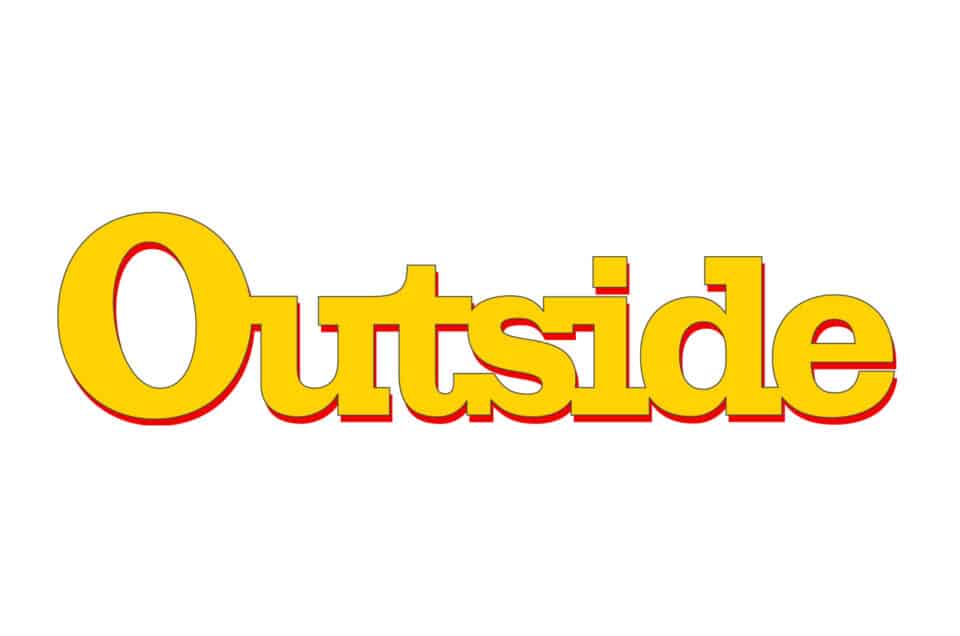

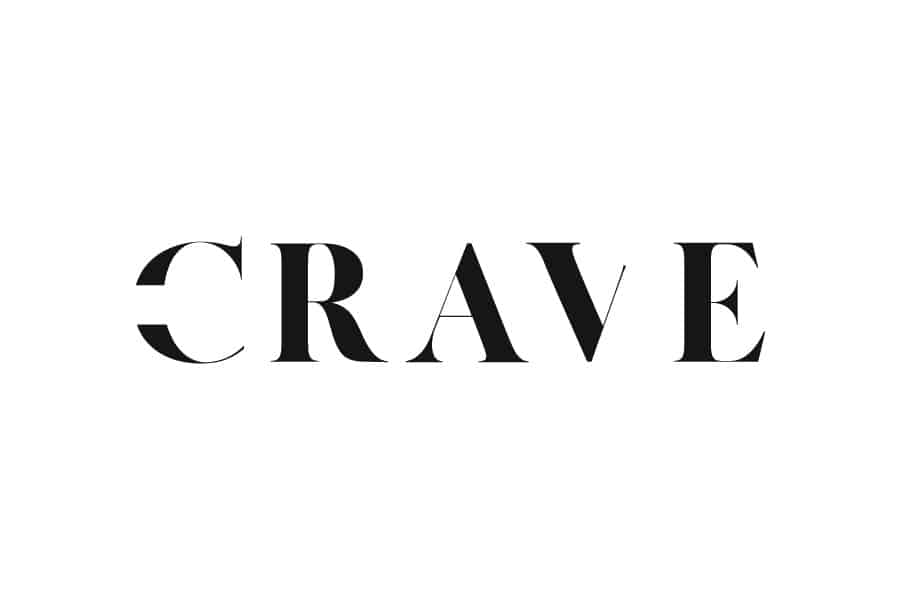
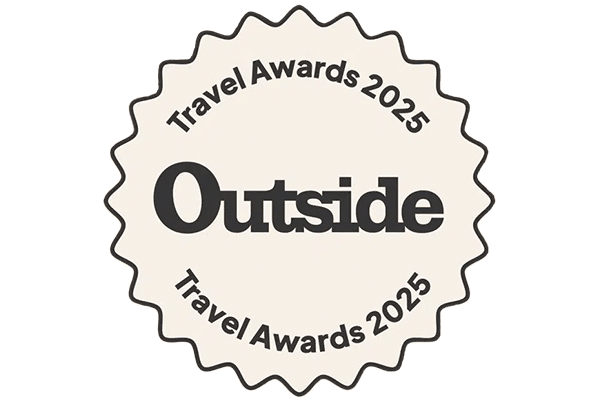
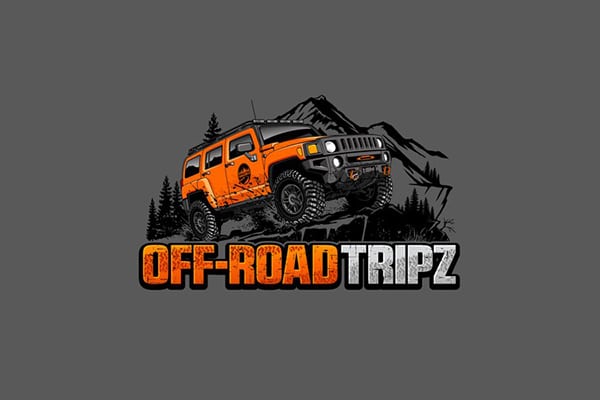

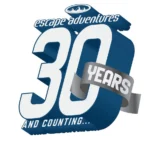

 Since 1992, we at Escape Adventures have been blessed to shape and lead adventure travel vacations through some of the most awe-inspiring natural destinations in the world. Each successive season, our passion for adventure grows through memorable moments with our guests. Fresh air, faith, fitness and friends are the building blocks for our ventures, the treasured experiences that keep us moving forward. For those of you who have trekked and traveled with us over the past quarter century, Heather and I express our sincerest gratitude. The memories are priceless.
Since 1992, we at Escape Adventures have been blessed to shape and lead adventure travel vacations through some of the most awe-inspiring natural destinations in the world. Each successive season, our passion for adventure grows through memorable moments with our guests. Fresh air, faith, fitness and friends are the building blocks for our ventures, the treasured experiences that keep us moving forward. For those of you who have trekked and traveled with us over the past quarter century, Heather and I express our sincerest gratitude. The memories are priceless.